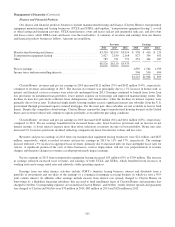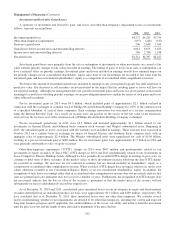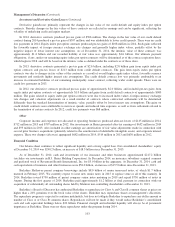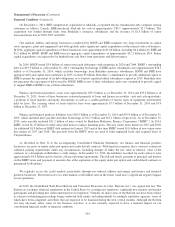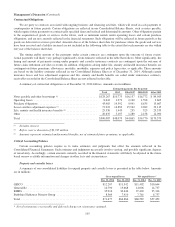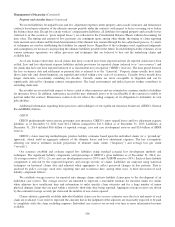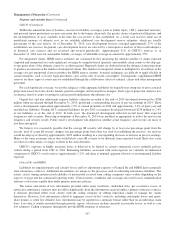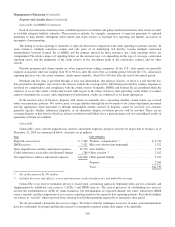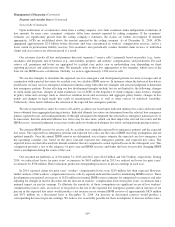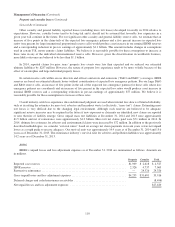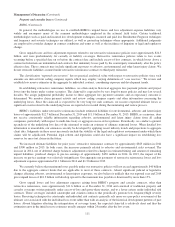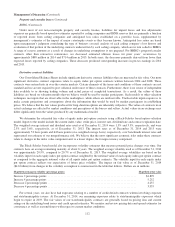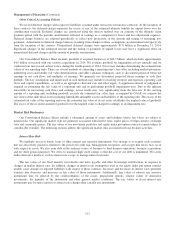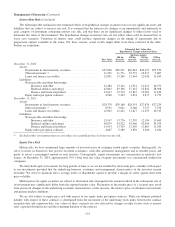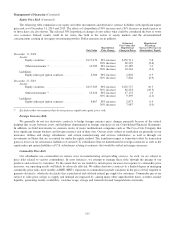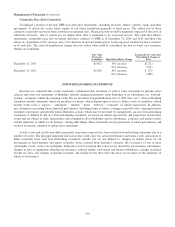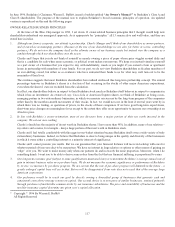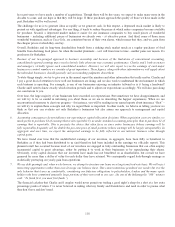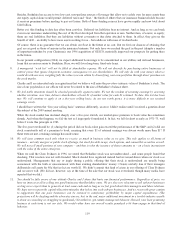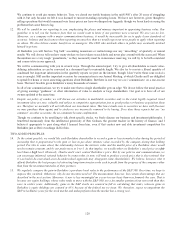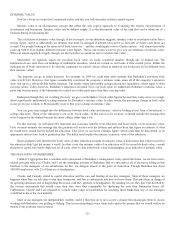Berkshire Hathaway 2014 Annual Report Download - page 113
Download and view the complete annual report
Please find page 113 of the 2014 Berkshire Hathaway annual report below. You can navigate through the pages in the report by either clicking on the pages listed below, or by using the keyword search tool below to find specific information within the annual report.Management’s Discussion (Continued)
Property and casualty losses (Continued)
BHRG (Continued)
In general, the methodologies we use to establish BHRG’s unpaid losses and loss adjustment expense liabilities vary
widely and encompass many of the common methodologies employed in the actuarial field today. Certain traditional
methodologies such as paid and incurred loss development techniques, incurred and paid loss Bornhuetter-Ferguson techniques
and frequency and severity techniques are utilized, as well as ground-up techniques where appropriate. Additional judgments
are employed to consider changes in contract conditions and terms as well as the incidence of litigation or legal and regulatory
change.
Gross unpaid losses and loss adjustment expenses related to our retroactive reinsurance policies were approximately $24.3
billion, and were predominately for casualty or liability coverages. Retroactive reinsurance policies relate to loss events
occurring before a specified date on or before the contract date and include excess-of-loss contracts, in which losses above a
contractual retention are indemnified and contracts that indemnify losses paid by the counterparty immediately after the policy
effective date. These contracts may include significant exposures to asbestos, environmental and other latent injury claims. We
do not retrocede liabilities assumed under retroactive reinsurance contracts to third party reinsurers.
The classification “reported case reserves” has no practical analytical value with respect to retroactive policies since such
amounts are derived from ceding company reports which may employ varying definitions of “case reserves.” We review and
establish loss reserve estimates in the aggregate by individual contract, considering exposure and development trends.
In establishing retroactive reinsurance liabilities, we often analyze historical aggregate loss payment patterns and project
losses into the future under various scenarios. The claim-tail is expected to be very long for many policies and may last several
decades. We assign judgmental probability factors to these aggregate loss payment scenarios and an expectancy outcome is
determined. We monitor claim payment activity and review ceding company reports and other information concerning the
underlying losses. Since the claim-tail is expected to be very long for such contracts, we reassess expected ultimate losses as
significant events related to the underlying losses are reported or revealed during the monitoring and review process.
BHRG’s liabilities under retroactive reinsurance include estimated liabilities for environmental, asbestos and latent injury
losses of approximately $12.7 billion at December 31, 2014 and $11.9 billion at December 31, 2013. BHRG, as a reinsurer, does
not receive consistently reliable information regarding asbestos, environmental and latent injury claims from all ceding
companies, particularly with respect to multi-line treaty or aggregate excess-of-loss policies. Periodically, we conduct a ground-
up analysis of the underlying loss data of the reinsured to make an estimate of ultimate reinsured losses. When detailed loss
information is unavailable, our estimates can only be developed by applying recent industry trends and projections to aggregate
client data. Judgments in these areas necessarily include the stability of the legal and regulatory environment under which these
claims will be adjudicated. Potential legal reform and legislation could also have a significant impact on establishing loss
reserves for mass tort claims in the future.
We increased ultimate liabilities for prior years’ retroactive reinsurance contracts by approximately $825 million in 2014
and $300 million in 2013. In both years, the increases primarily related to asbestos and environmental risks assumed. The
increase in 2014, net of deferred charge balances adjustments related to changes in estimated timing and amount of remaining
unpaid liabilities, produced charges to pre-tax earnings of approximately $450 million in 2014. In 2013, the impact of the
increase on pre-tax earnings was relatively insignificant. Our aggregate net payments of retroactive reinsurance losses and loss
adjustment expenses approximated $1.1 billion in 2014 and $1.3 billion in 2013.
We currently believe that maximum losses payable under our retroactive policies will not exceed approximately $40 billion
due to the aggregate contract limits that are applicable to most of these contracts. Absent significant judicial or legislative
changes affecting asbestos, environmental or latent injury exposures, we also believe it unlikely that our reported year end 2014
gross unpaid losses of $24.3 billion will develop upward to the maximum loss payable or downward by more than 15%.
Gross unpaid losses and loss adjustment expenses arising from BHRG’s property and casualty contracts, other than
retroactive reinsurance, were approximately $11.6 billion as of December 31, 2014 and consisted of traditional property and
casualty coverages written primarily under excess-of-loss and quota-share treaties, and to a lesser extent, under individual risk
contracts. These coverages included catastrophe and aviation contracts that periodically generate low frequency/high severity
losses. Reserving techniques for catastrophe and individual risk contracts generally rely more on a per-policy assessment of the
ultimate cost associated with the individual loss event rather than with an analysis of the historical development patterns of past
losses. Absent litigation affecting the interpretation of coverage terms, the expected claim-tail is relatively short and thus the
estimation error in the initial reserve estimates usually emerges within 24 months after the loss event.
111


